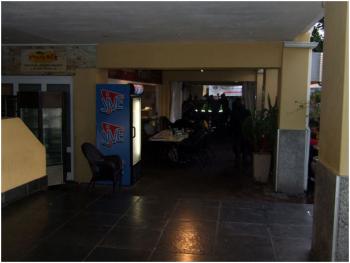Posted on August 10, 2010
Did you feel it, it was here. All sections of South African Society are currently taking stock of the impact of the 2010 FIFA World Cup™ either economically, socially or politically. Perhaps it is also important then to reflect on how it impacted heritage sites and institutions. Unfortunately I did not feel it but I certainly tried but every time I tried something got in the way. From the billions that were 'wasted' on sports to Shakira, whether the 2010 FIFA World Cup™ was financially viable, to the meaning of being South African, to issues of service delivery in our country - one is left with more questions than answers. This World Cup managed to get on my nerves on a regular basis.

Why is it that we were able to allow our heritage to be obscured? My concern lies around if this was done during the 2010 FIFA World Cup™, what other decisions can be taken by the Waterfront Management Company in the future that will adversely affect the Robben Island Museum.
As South Africans we are fantastic at hosting, sometimes we host so well that tomorrow we have nothing to eat yet we served steak to our guests that have departed. This tradition of treating our guest better then we would treat ourselves, might explain the all-out craze that surrounded the World Cup.

Location, location, location are words that I have heard mentioned whenever property is mentioned. This is also an indicator of how well businesses are doing. The Nelson Mandela Gateway at the Clock Tower seems to be in an ideal location to benefit from the tourist trade and traffic at the Waterfront. Unlike other institutions, the Museum does not have a choice as to where its embarkation point will be. Its location in the middle of the ocean determines what it is able to do and unfortunately ferries have to leave from the Waterfront.

Being part of the Waterfront has its advantages and its disadvantages and I am sure that the Museum has been able to utilize the benefits to its own advantage. However the current situation at the Waterfront is untenable, the institution is completely obscured by commercial entities as the recent 2010 FIFA World Cup has so blatantly revealed. It is clear to me that we need to begin a rigorous debate about how commercial entities interface with heritage sites and institutions.
